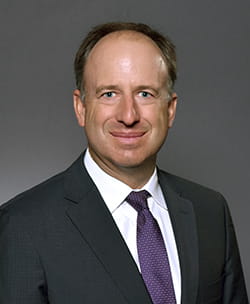
Thought Leadership
How to Tell When You Don’t Have a Competitive Advantage—and How to Get One
It may sound counterintuitive, but one of the most useful things many executives can learn about their company’s competitive advantage is that they don’t have one — and there’s nothing wrong with admitting it. “That’s true of many firms, including successful ones,” said Thomas Hubbard, Academic Director of Kellogg Executive Education’s Competitive Strategy program.
Hubbard stressed that it’s easy for a given company to misidentify a given element of their business as an advantage when it isn’t. “They have a lot of important assets and capabilities without which they’d fail, but that doesn’t mean those are sources of competitive advantage,” he said. “When they do the analysis, they often mistake competitive necessities for competitive advantage. They’ll recognize that this group of scientists or that production location are key to their success, but they don’t recognize that it merely makes them viable; it’s not what leads them to outperform their competitors. Often, they’re not outperforming them at all. And giving them permission to conclude that allows them to think hard about what they might do to get there. Usually, it’s not tough news to hear. It’s a breath of fresh air.”
Many times, Hubbard said, executives try to convince themselves they know what their competitive advantage is, but deep down, they aren’t confident in their answer. A commonly misidentified advantage? Company culture.
“Every organization’s culture is different, so they’ll point to that and say it cannot be replicated, so that’s their competitive advantage,” Hubbard said. “So our next question is, describe something your culture enables you to do or create that, absent this culture, you could not accomplish. How does it create value in the market? Often, they’re unable to answer that. An organization can have a very strong culture that might not be creating any recognizable value. Other times, it may be a competitive advantage. But understanding exactly how and why it is a competitive advantage today allows you to understand under what circumstances it no longer would be one, and adjust your strategy accordingly.”
Once you recognize that your competitive advantage doesn’t, in fact, exist, the natural question follows: how do you go about getting one? According to Hubbard, the two key things to examine are scarcity and value capture: if it’s scarce, your competitors can’t replicate it. But if the firm is not capturing value from it, it’s not an advantage. “What are my existing resources and capabilities?” he said. “How are they creating value now, and how might they create value in the future — perhaps in the same competitive context or in different markets?
As an example, Hubbard cited Southwest Airlines. The company is often said to have a competitive advantage because it’s a point-to-point operator, while other airlines use the hub-and-spoke model. “That might be superficially correct, but others could imitate the point-to-point structure if they chose to,” he said. “You have to dig down a level to see what’s scarce, and Southwest probably has hiring practices or ways of managing incentives that allow it to operate point-to-point better than their competitors could. You can’t identify a competitive advantage without doing that digging.”
And dig is what participants in the Competitive Strategy program do — to the point where they often begin discussing their situation or even taking action before they’ve even returned to the office. “They’ll call their team while they’re still here and start having the discussion then,” Hubbard said. “Sometimes we’ll have four or five people from the same company, and they start applying their conclusions in real time. One of the most enjoyable aspects of teaching this program is that we can have such a rapid impact. We give them tools they can apply more or less immediately when they get home, and we try to facilitate that.”
 |
Thomas Hubbard has been a professor at Kellogg since 2005, and served as Senior Associate Dean, Strategic Initiatives from 2012-2015. Before coming to Kellogg, he was a professor at the University of Chicago GSB and the University of California, Los Angeles. During 2004-5, he was a visiting professor at Columbia GSB. Professor Hubbard's research interests mainly concern how information problems affect the organization of firms and markets, and therefore the structure of industries. |
Competitive Strategy
Based on time-tested economic principles for profitability and growth, this program offers strategy-focused leaders a blend of modern theory, strategic analysis and practical application for sustaining an organization’s long-term competitive advantage.
Upcoming Sessions
|
May 11 - 15, 2026 Start: May 11 at 1:00 PM End: May 15 at 11:45 AM
LOCATION:
A preferred hotel rate is available at the Omni Chicago. |
$9,950 Fee does not include accommodations. |
|
|
September 14-18, 2026 Start: September 14 at 1:00 PM End: September 18 at 11:45 AM
LOCATION:
A preferred hotel rate is available at the Omni Chicago. |
$9,950 Fee does not include accommodations. |



